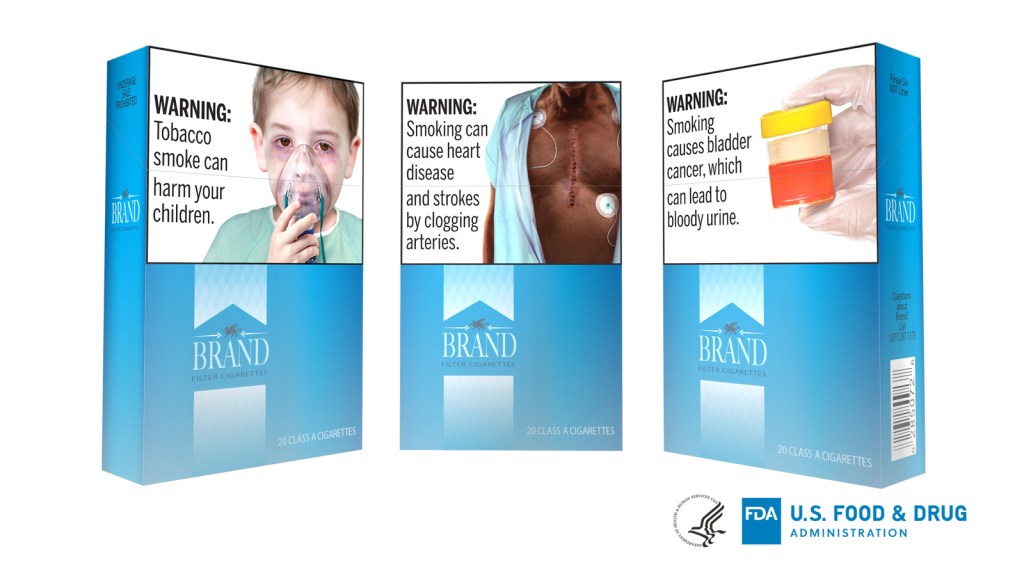When Betty Draper of “Mad Men” puffed on a cigarette while pregnant, modern audiences cringed. Public awareness of smoking’s toll on people’s lungs and on their children has come far since the 1960s. But lung cancer and birth defects are only a couple of the severe health problems associated with tobacco use. New warning labels the Food and Drug Administration rolled out last Thursday aim to make other potential health consequences better known – with large, graphic depictions of what else long-term smokers should expect from their habit.
One of the new labels shows a man with a heart surgery scar running up his chest, warning that smoking clogs arteries and causes heart disease and strokes. Another depicts diseased feet with amputated toes, warning that smoking reduces blood flow to the limbs and can lead to amputations. Yet another shows a vial of bloody urine, warning that smoking causes bladder cancer. The labels would have to take up at least the top half of cigarette packages and at least the top 20 percent of tobacco advertisements.
These would be far more forceful than the tiny, text-only warnings carried on tobacco products now, which have changed little since “Mad Men” days. Acting FDA Commissioner Norman “Ned” Sharpless told reporters on a Thursday conference call that the administration’s research shows the public is “surprisingly unaware of many of the risks of smoking.” FDA tobacco chief Mitch Zeller also said the old surgeon general’s warnings “have become virtually invisible.” Indeed, other countries have surpassed the United States in the severity and graphic nature of the warnings they require on tobacco packaging.
Extensive FDA consumer research found that the information on the proposed warning labels was new to smokers and nonsmokers alike. The experiences of other nations suggest that large, graphic warning labels help deter smoking and discourage tobacco users from smoking around others. The images on the FDA’s new labels would quickly convey to English and non-English speakers alike the real-world effects of their habit.
New warnings are a long time coming. The 2009 Tobacco Control Act required them. But the FDA’s first attempt got mired in litigation. Now the FDA is trying again with new warning labels backed by substantial new consumer research. By tying these labels’ content closely to its mission of educating the public about the various harms of tobacco use, the FDA should prevail in any further court challenges, in light of jurisprudence that allows the government to require disclosures on products and in advertising.
For the decade since it passed, the Tobacco Control Act has promised to be a game-changing policy tool in the fight against the nation’s leading cause of preventable death. Realizing that promise has encountered delays, on cigarette labeling as in other areas. The sooner these new labels are on tobacco packages, the better.
Send questions/comments to the editors.



Comments are no longer available on this story